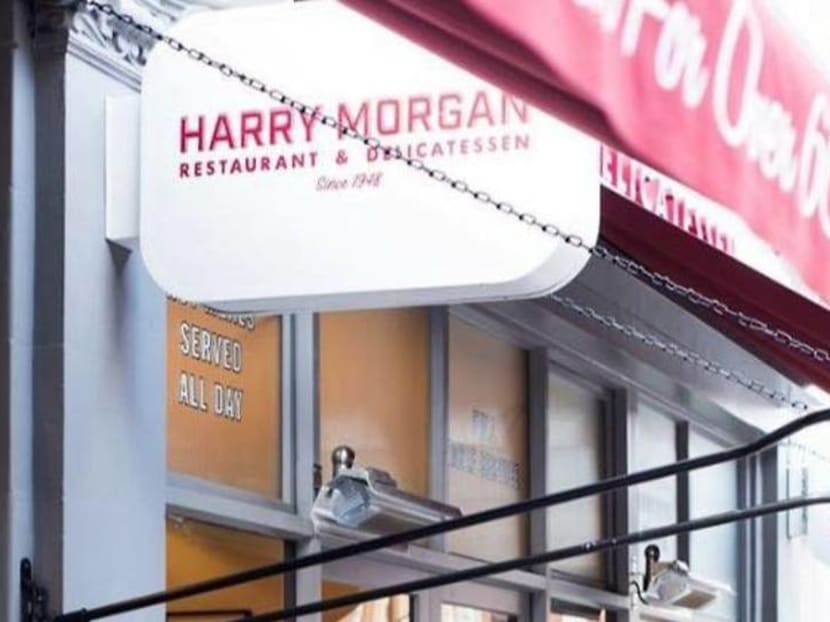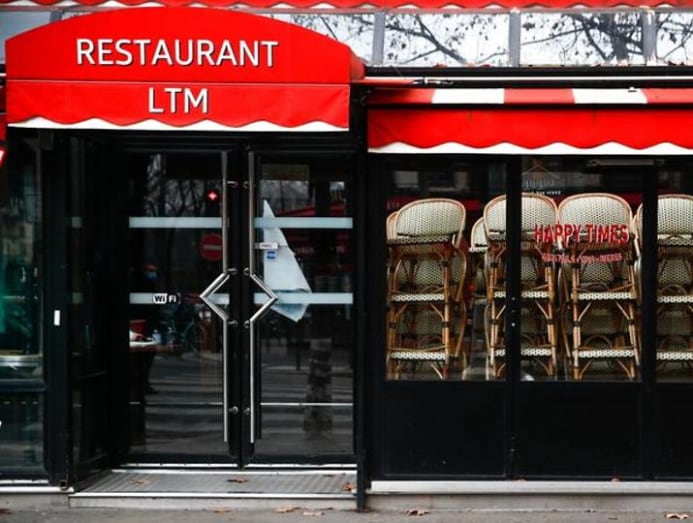commentary Commentary
Commentary: We lose more than meals when a loved restaurant shuts for good
The pandemic has taken a toll on dining establishments which have served customers for decades and when they die, a slice of society’s soul does too, says Jo Ellison.

The Harry Morgan restaurant has been serving customers since 1948. (Photo: Harry Morgan/Facebook)
LONDON: The salt beef at Harry Morgan may not have been the greatest salt beef the world has ever known, but people really made an effort to seek out its chicken noodle soup.
Founded in 1948, Harry’s was one of the first New York-style delis in London, and for more than 70 years it served the residents of St John’s Wood challah French toast and salmon bagels at red banquettes and diner tables with all the proper condiments.
As with most dining institutions, Harry Morgan’s success lay in its unchanging menu and easy informality. For years I went there to eat the chicken noodle soup with matzo balls (hold the noodles) with friends and family, most often on a Saturday lunchtime after windswept mornings in the rain.
READ: Prima Tower Revolving Restaurant closes after 43 years, felled by impact of COVID-19
It was one of the few places I returned to when the various lockdowns were slightly lifted. Eating there felt as reassuring and familiar as dining in my living room.
And now it has gone. Last month, and having survived the pandemic, it joined the list of casualties to fall victim to a rent dispute. Overnight, and with scarcely any warning, Harry Morgan was extinguished, and the managers threw in the towel.
When I passed it last week, its once iconic hoarding (in our house at least) had been whitewashed, replaced by posters in the window declaring the arrival of some new food establishment.
I suppose it was inevitable. St John’s Wood High Street, which sits only a short walk from central London, has always been a bit of an anomaly, a well-heeled suburb oddly lost in time.
But recent years have seen its quainter charms eroded by newcomers: Among the arrivals are a hot yoga studio, an Ivy restaurant and a beauty parlour called FaceGym.
Nor is St John’s alone in falling prey to rising rent costs. This month also saw the announcement of the closure of another UK landmark, Arthur Beale, a yacht chandler in Covent Garden that sold rope to Tenzing Norgay to conquer Everest, and an ice axe to Ernest Shackleton of the Antarctic. It will be shuttered in June thanks to rising rents.
WHY DON’T WE DO MORE TO SAVE EATERIES
But it’s the closure of the restaurants that I think wounds us most deeply.
It’s always seemed extraordinary that for a country that wangs on and on about its history, the UK’s attitude towards its dining institutions has always bordered on blasé.
READ: Commentary: Can the F&B industry and food delivery platforms cope better this time around?
READ: Commentary: Why do some children choose unhealthy food when they get older?
We’ll cry in outrage about the possible removal of a statue, and campaign about the sale of artwork owned by an aristocrat who can’t afford to pay his taxes.
But where’s our sense of outrage when it comes to those smaller gems that truly enrich us? Where are the petitions to save our chicken soup?

Few things make one feel as connected to a city as eating at an institution that’s been the haunt of generations — even if the food they serve is dated, or the waiting staff are rude.
Nowhere in New York makes me feel so quite Manhattan as eating at the Grand Central Oyster Bar, a temple of Guastavino glass-tiled ceilings that has been serving fresh oysters to commuters in the bowels of the railway station since 1913, or stopping by Veselka, the home of heart-stoppingly stodgy Ukrainian pierogi and buckwheat pancakes since 1954.
We all pay extortionate prices to be ignored by the career waiters who circle the Café de Flore, one of the oldest coffee houses in Paris, and the second home of philosophers, artists and supermodels to this day.
Do we go there to savour the restaurant’s signature Le Welsh rarebit? Lord no, you’d want your head examined before embarking on that revolting bowl of sliced white bread and scalding cheddar.
We go there for the ambience, the cachet and the feeling of belonging. We go there because no trip to Paris feels quite right until we have.
But unlike other cities in which traditional trattorias, canteens and brasseries are all part of the topography, I could probably tot up London’s food institutions by counting on one hand.
WATCH: Why Singapore's heritage eateries are calling it quits
Few places have been around for longer than two decades, and it’s an absence that makes the city, for all its thrusting confidence, feel infinitely less.
I suspect it’s food shame that has made Britons so complacent. Having long harboured a reputation for serving the worst cuisine in the world, Britain has been coy about protecting its pie and mash shops, as though we’re embarrassed to admit that we might enjoy our food.
It’s telling, for example, that our national dish of fish and chips is served like garbage, bundled into newspapers and mostly consumed at home.
Traditional restaurants have been elbowed out of the way for an influx of jazzier alternatives — ceviche palaces, vegan sanctuaries and gourmet burger bars.
The UK has an unusually broad palette when it comes to dining options (if you’re seeking out its institutions you’re better off eating curries, Japanese or Szechuan food) but it cares little for its classics.
Harry Morgan only survived so many decades because it was one of the first restaurants to serve up Jewish fare. And now it’s vanished. Which is very much our loss.
In our appetite for change we sacrifice far more delicious pleasures. The new shiny eateries might satisfy us for a moment, but it’s the old familiar institutions that really nourish us long-term.
One year since the pandemic, why do users, riders and restaurants alike still have complaints about food delivery apps? A business professor and a ride-hailing app founder weigh in on CNA's Heart of the Matter podcast:



